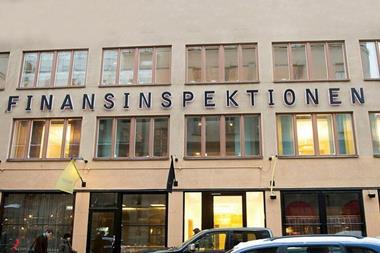The commercial mortgage-backed securities (CMBS) market sees billions of euros-worth of bonds issued worldwide each year, all backed by the rental income from commercial and residential properties.
Debt securitisation is the process of converting rental income into bonds or other interest-paying IOUs – the CMBS – which can be sold in the capital markets. The investors who buy these bonds are international: pension funds, life insurers and banking groups.
They are buying a bond which will pay them interest for a specified period – usually between 10 and 20 years – and at the end of that term they will get their capital back. There is a secondary market where bonds can be subsequently traded.
It is debatable whether CMBS ought to be considered a real estate investment, as most institutional investors buy them through their fixed-income teams. However, some real estate investors have used them, often tactically, as part of a real estate portfolio. While their returns have different characteristics from real estate itself, they are backed by real estate and also offer liquidity.
While the interest payments on the bonds is backed by the interest payments on real estate loans and therefore the underlying property assets, CMBS issuers convert the real estate returns – which have both fixed income and equity components – into bond returns, paying a fixed or floating rate of interest.
The bond issuer divides up the risks and returns from the real estate loans (which may be dependent on the performance of one or a number of properties) and creates different tranches of bonds, each with a different credit rating and a different rate of interest.
For example, securitisation of a loan on a single property could create three tranches of bonds. The first may have an AAA credit rating and pay a low coupon, the second could a BBB rating but pay higher interest and the last might have a B rating with even higher interest. Naturally the investors in the lowest rating tranche will make the most money, but they run the highest risk of losing their investment if the tenant of the building goes bust or something else goes wrong with the transaction. Unrated slices are the riskiest of all.
Investors in CMBS, often have little or no knowledge of real estate, or the buildings and leases which back the bonds. Instead, credit rating agencies such as Moody’s and Standard & Poor’s assess the deal structure and the properties in order to give the credit score.
In a typical securitisation, the mortgage originator – often an investment bank such as Morgan Stanley – will set up a special-purpose vehicle (SPV) which pays an up-front sum to buy loan. In some cases real estate owners securitise their
properties directly – selling the assets to, or taking a loan on the assets from, the SPV that they have created.
This purchase releases cash which the SPV raises by issuing bonds, which are secured on the buildings. The rental income is used to pay the interest and amortise all or part of the principal over the life of the bonds.
If something goes wrong, and the rental income falls so that the bonds default on payments, the bondholders can claim the property and sell it to recoup their investment.
They also have a certain amount of say about what can and cannot be done with the properties during the term of the bond. Often, in order to get the best (that is, lowest) interest payments, the issuer will accept strict restrictions about what can be done with the assets.
The art of securitisation lies in engineering a structure that will raise the maximum amount of money at the lowest cost to the issuer.
One of the most common structures is the real estate conduit. It was pioneered in Europe by
Morgan Stanley, which has issued €5bn of CMBS through its EloC structure.
The conduit structure pools real estate loans, which are then securitised once a certain critical mass has been reached.
The cash released from the CMBS deal can then be lent on to new projects.
Prospects for European CMBS in 2005
The European CMBS market has exhibited strong growth since 1998, with six straight years of increased issuance in
terms of the number of deals and growth in five of the past six years on a total issuance basis.
Last year was a record year and one that was also significant for substantial growth in the number of repeat issuers, according to rating agency Fitch. This trend is expected to continue in 2005.
Many other positive factors are evident in the current market: investor sentiment is improving, spreads are tightening and more investors have emerged across the whole rating spectrum, Fitch says.
The rating agency predicts that in 2005, overall issuance will increase as the
number of issuers continues to rise.
Deals based in the UK should not decrease on an absolute basis, but the UK’s share of total volumes should decrease as continental European transactions increase substantially.
Furthermore, the breadth of issuance should continue to widen as deals are
consummated in new countries.
One new development will be the
securitisation of German non-performing loans. Large issues are expected in this
sector.
Fitch says the credit outlook for 2005
is expected to be relatively stable as the
most heavily concentrated geographic areas – in particular the United Kingdom and
Paris – appear to show stabilising or
improving markets.












No comments yet